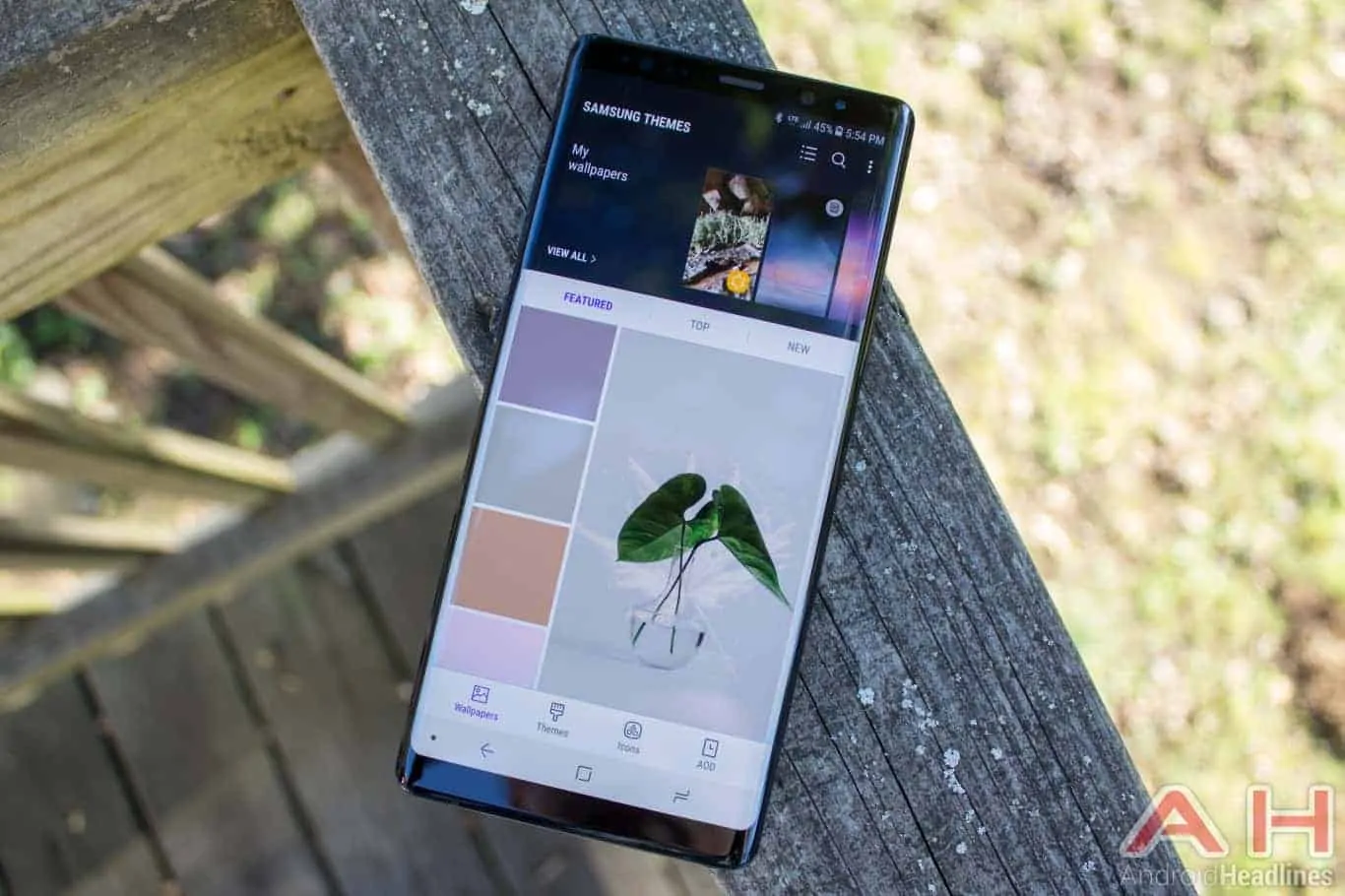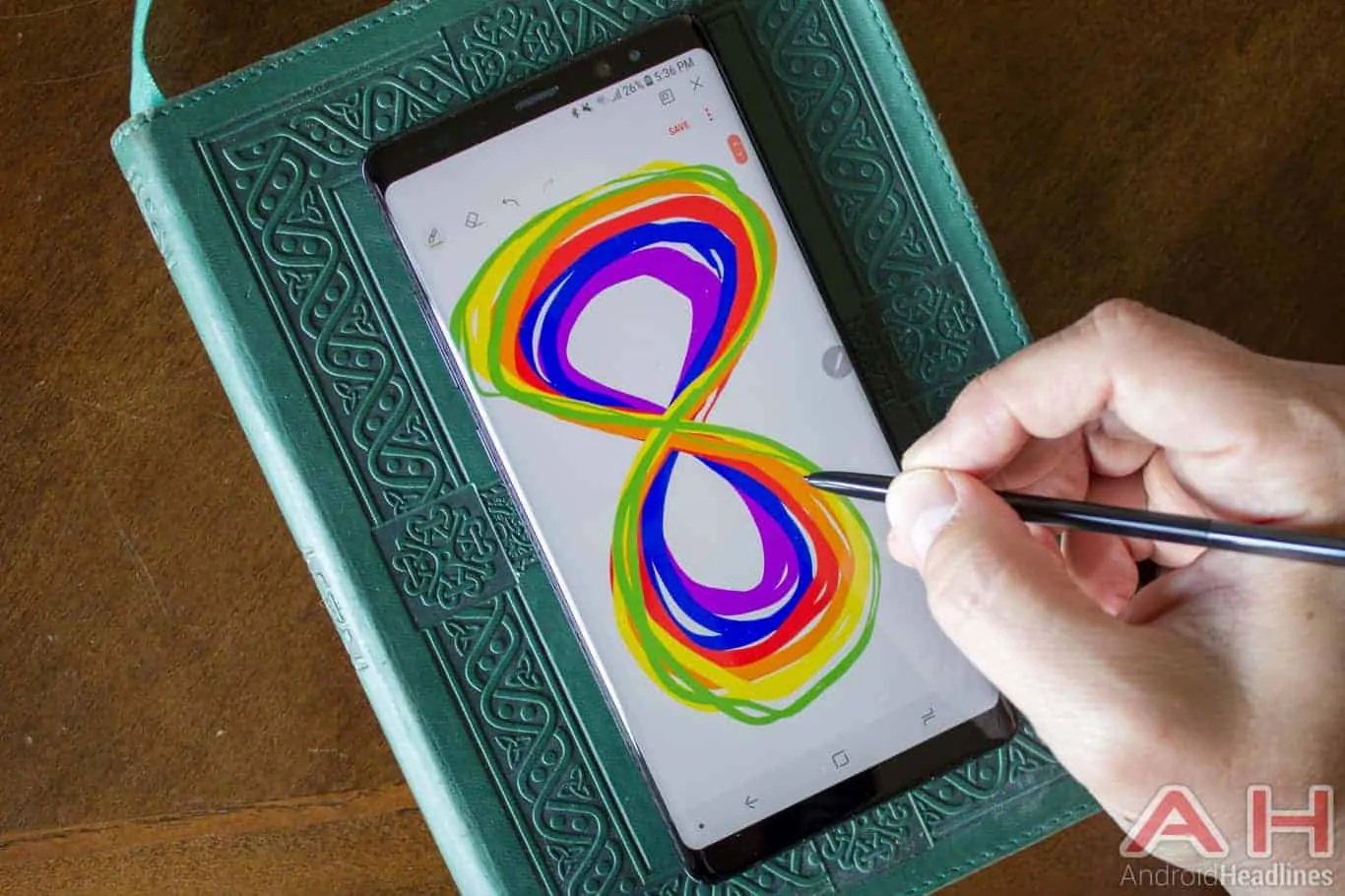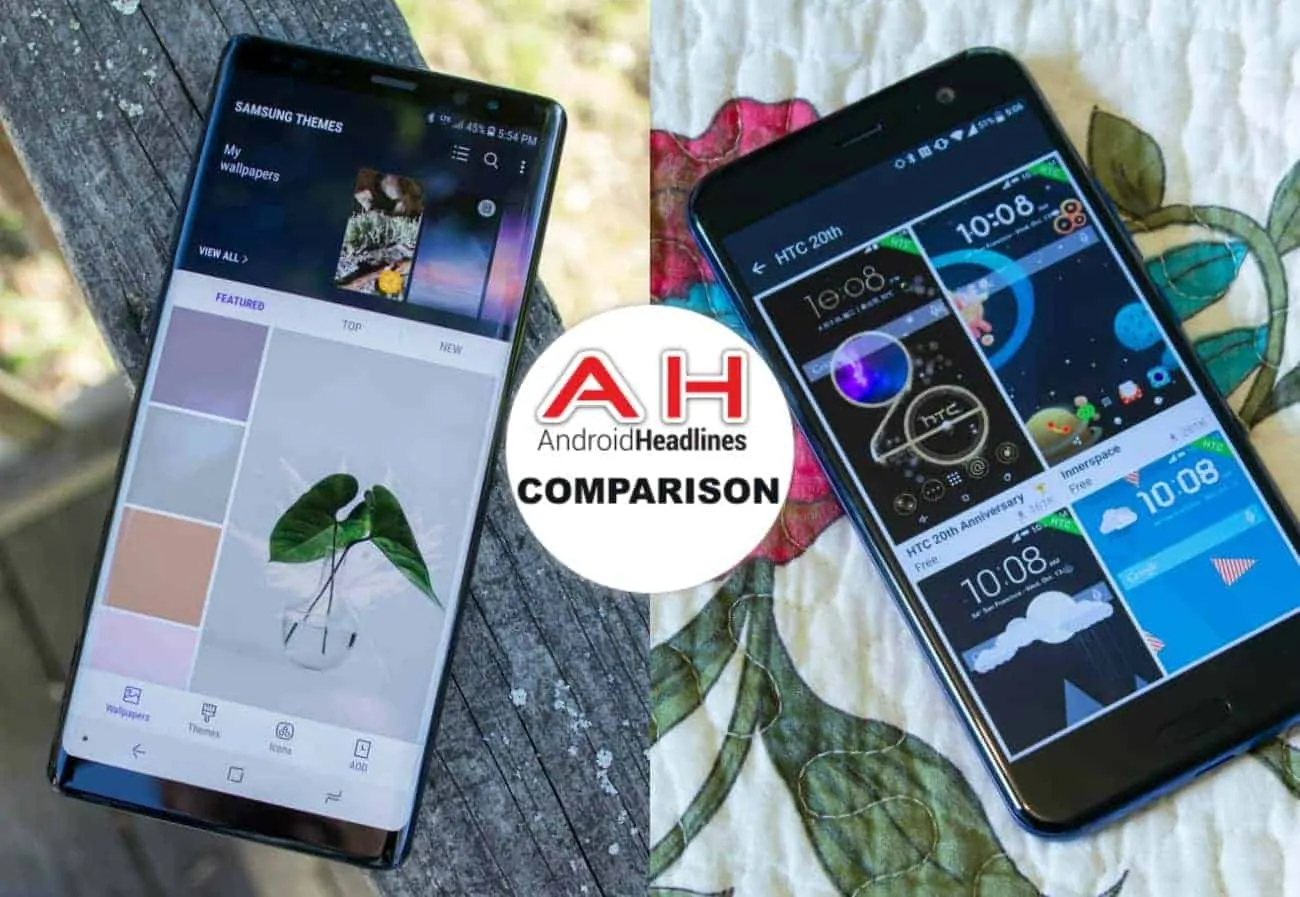Introduction
Do we have an interesting comparison for you today – the Samsung Galaxy Note 8 goes up against the HTC U11. While it is always difficult to compare the multifaceted Galaxy Note 8 with any ‘mortal’ smartphone, it is a necessary comparison to see just how these fine devices stack up against one another – especially when they use the same processor and GPU. Both devices are beautiful – the Note 8, especially the front with its near bezel-less display and curve edges and the HTC U11, especially from the back where it will dazzle you with its brilliant glass back. Both devices pack many features, especially the Note 8 with its wonderful S Pen, but if you will never use the S Pen, the HTC U11 just might be your choice. Pricing may also affect your decision – the Galaxy Note 8 will cost you about $960 and the HTC U11, only about $650. Is the Note 8 worth the extra $300 (although most places are offering price cuts) or is the HTC U11 good enough for your situation. Let’s take a look to see just what these two handsets have in common and then we will take a closer look at each one of them.
These two powerhouse devices do share a few things in common, but non when it comes to the display other than Gorilla Glass 5 is used for protection. They both use the Qualcomm Snapdragon 835 processor and the Adreno 540 GPU, although EMEA countries will get Samsung’s own Exynos 8895 processor and their Mali-G71 MP20 GPU. The Note 8 has a base of 6GB of RAM with 64GB of expandable internal memory. The HTC U11 has two models – a 4GB/64GB and a 6GB/128GB – both have expandable memory. We are looking at the 4GB/64GB model in this comparison. They both use a 12-megapixel sensor, but the Note 8 has two of them. Both have a non-removable battery with Quick Charge capabilities, although the Note 8 also has wireless charging. The Note 8 and HTC U11 both have NFC, Bluetooth (v5.0 on Note 8 and v4.2 on HTC U11), a USB 3.1 Type-C port, a fingerprint sensor, Hi-Res Audio, facial recognition, water resistance, Android 7.1, and both use a glass front and back with a metal frame.
Please take a careful look at the detailed specifications comparison chart below and here you will see just how these two great devices stack up against one another. After that, we will look at each device in greater depth and point out some of its pros and cons. From all of this information, we will try to determine the winner based on specs and execution of design and functions.
Specifications

Samsung Galaxy Note 8
 The Galaxy Note 8 is Samsung’s most beautiful and feature packed smartphone to date. It incorporates their Infinity Display that wraps around both edges and into the metal frame, followed up by the Gorilla Glass 5 back. Gone are the physical home buttons, replaced by onscreen buttons. This design eliminates any side bezels and allows the Note 8 to have a very small top and bottom bezel. The small bottom bezel has no visible function, while the indicator light, speaker, FFC, and the iris scanner reside on the top bezel. In an effort to keep users from putting their finger on the camera lens, Samsung moved the flash in between the camera lens and the fingerprint sensor – it is still not the best arrangement. When light is illuminating your face, you can quickly unlock the phone with its facial recognition or the iris scanner (if you do not wear glasses). However, for those times, when they do not work, you can always fall back on using a pin for unlocking the Note 8. Samsung made the S Pen and software more productive and easier to use on the Note 8. The Galaxy Note 8 is arguably the best looking and most feature-laden smartphone on the market, however, all of this technology comes at a cost of approximately $960.
The Galaxy Note 8 is Samsung’s most beautiful and feature packed smartphone to date. It incorporates their Infinity Display that wraps around both edges and into the metal frame, followed up by the Gorilla Glass 5 back. Gone are the physical home buttons, replaced by onscreen buttons. This design eliminates any side bezels and allows the Note 8 to have a very small top and bottom bezel. The small bottom bezel has no visible function, while the indicator light, speaker, FFC, and the iris scanner reside on the top bezel. In an effort to keep users from putting their finger on the camera lens, Samsung moved the flash in between the camera lens and the fingerprint sensor – it is still not the best arrangement. When light is illuminating your face, you can quickly unlock the phone with its facial recognition or the iris scanner (if you do not wear glasses). However, for those times, when they do not work, you can always fall back on using a pin for unlocking the Note 8. Samsung made the S Pen and software more productive and easier to use on the Note 8. The Galaxy Note 8 is arguably the best looking and most feature-laden smartphone on the market, however, all of this technology comes at a cost of approximately $960.
Samsung made some major changes in the display by increasing its size from 5.7-inches to 6.3-inches, changing the aspect ratio from 16:9 to 18.5:9, and now uses their Infinity Display. It uses a QHD+ display with a pixel resolution of 2960 x 1440 that generates 521 pixels-per-inch (PPI). The Note 8 arrives with its resolution default set to an FHD+ (2220 x 1080) to help save battery life. You simply need to go into the display settings to increase it to the QHD+ resolution. Samsung included their ‘always-on’ display that not only saves battery life, but also makes it easier and quicker for the user to check their notifications.
Samsung normally uses two processors in their flagships and the Galaxy Note 8 is no exception. The US/China models use Qualcomm’s Snapdragon 835 octa-core processor a quad core clocked at 1.9GHz and a quad core clocked at 2.35GHz, paired with an Adreno 540 GPU. For EMEA countries, Samsung uses its excellent Exynos 8895 octa-core clocked at 2.3GHz and the Mali-G71 MP20 GPU for graphics. Both processors use the new 10nm technology. The Galaxy Note 8 packs a full 6GB of DDR4 RAM that helps contribute to its fast and smooth operation and ease of multitasking. It has 64GB of expandable memory via a microSD card. The non-removable 3,300mAh battery should easily make it through the day even when using the QHD+ setting. When you do need to charge the Note 8, it features Samsung’s Adaptive Fast Charging and Quick Wireless Charging for both Qi and PMA formats.
The rumors of a dual-camera Samsung device are now fulfilled with the Note 8 and they will probably include them on every flagship from here on out – hopefully with more functionality, such as a monochrome sensor. The Note 8 comes with dual 12-megapixel cameras that include a large aperture of f/1.7 for low light conditions (an f/2.4 on the secondary), PDAF, a dual-tone LED flash, auto HDR, OIS, and 2X Optical Zoom. You can get as high as 10X by pinching the screen, but that is a digital zoom. The primary camera handles most of your photo shots, while the secondary camera comes into play if the user wants to create photos with a bokeh effect – Samsung recently updated the ‘live focus’ through a software upgrade. Samsung uses a nice sized 8-megapixel front-facing camera (FFC) with a large f/1.7 aperture, auto-HDR, and even provides autofocus and is great for selfies and video calls.
Samsung has included so many features in Note 8 that many users will never explore them all. One such option is the DeX Station (an optional purchase) that will allow you to interface the Galaxy Note 8 with a monitor, keyboard, and mouse to give you a near-desktop experience. Another option is Samsung Connect that allows you to control Samsung’s appliances. Samsung, in its effort to compete with Apple’s Siri and Google’s Assistant, developed its own personal assistant, Bixby. The Galaxy Note 8 carries Samsung’s popular heart rate monitor and oxygen saturation sensor. One nice Samsung feature is that you have access to Android Pay, but also Samsung Pay, which opens up even more possibilities to make mobile payments. The Galaxy Note 8 series is IP68 certified against dust and water. The one truly unique feature that sets the Note 8 apart from other smartphones is its S Pen and associated apps. Samsung improves both the S Pen and the software every year – the Note 8 makes the S Pen more productive and easier to use. It arrives with Android 7.1.1 Nougat, measures 162.5 x 74.8 x 8.6 mm, and weighs in at a hefty 195 grams. It is available in Midnight Black, Orchid Grey, Maple Gold, or Deep Sea Blue depending where you are located. The Galaxy Note 8 will cost about $960 outright and is available for purchase from just about everywhere.
HTC U11
 HTC started with a bang during the early years of Android, but in recent years, while their devices were sharp looking, they always lacked the top specs in technology. They watched Samsung rise to the number one spot, with LG trailing behind. In June, HTC released their HTC U11 with good reviews. The main complaints are the large bezels on the front, no 3.5mm headphone jack, and its lack of two front-facing speakers. It is rather ordinary looking from the front with its large bezels, but the back of device is beautiful with its shiny glass – both a blessing and a curse when it comes to fingerprints. The inside is full of the best technology, includes a great camera, and Edge Sense. HTC kept the old 16:9 display ratio. The way it is priced, does the HTC U11 have what it takes to go against the Note 8 – let’s take a look.
HTC started with a bang during the early years of Android, but in recent years, while their devices were sharp looking, they always lacked the top specs in technology. They watched Samsung rise to the number one spot, with LG trailing behind. In June, HTC released their HTC U11 with good reviews. The main complaints are the large bezels on the front, no 3.5mm headphone jack, and its lack of two front-facing speakers. It is rather ordinary looking from the front with its large bezels, but the back of device is beautiful with its shiny glass – both a blessing and a curse when it comes to fingerprints. The inside is full of the best technology, includes a great camera, and Edge Sense. HTC kept the old 16:9 display ratio. The way it is priced, does the HTC U11 have what it takes to go against the Note 8 – let’s take a look.
The HTC U11 does use a QHD resolution, but still uses the LCD technology and the older 16:9 display ratio. It sports a 5.5-inch Super LCD5 display, a resolution of 2560 x 1440 pixels and 534 PPI. HTC did not include any kind of display notification in an effort to help save battery life and make it more convenient for users. HTC, like the Note 8, uses the most powerful and up-to-date processor available when the device was released – the Snapdragon 835 octa-core with a quad-core clocked at 1.9GHz and another quad-core clocked at 2.45GHz. The Adreno 540 GPU is onboard for outstanding graphics. The HTC U11 comes with 4GB of DDR4 RAM and 64GB of expandable internal memory via a microSD card slot.
HTC is bucking the trend and sticking with a single lens format. The HTC U11 employs a 12-megapixel sensor along with HTC’s proprietary UltraPixel 3 technology. The main camera uses a large f/1.7 aperture, OIS, PDAF, and a dual-tone flash. The FFC is a huge 16-megapixel sensor with an aperture of f/2.0 to handle selfies and video chatting. A 3,000mAh battery powers the device and offers Quick Charge 3.0 – and even though it has a glass back, wireless charging was not included.
The U11 is HTC’s best device to date, although it looks a little dated on the front with its large bezels. The glass backing is beautifully designed – it is bright looking and curved for a good grip, it is also a fingerprint magnet. HTC pioneered dual speakers with their BoomSound, and while the HTC U11 does have stereo speakers, the U11 uses the earpiece for one speaker and the other is on the bottom edge of the device. This lacks the sound of a full-frontal placement, but they get the job done. HTC went for the IP67 rating and dropped the 3.5mm headphone jack – but they provide a dongle to convert the Type-C port to a headphone jack. They also included a great pair of USonic headphones to help soften the blow. The Edge Sense is a very productive solution and offers some real function to the U11. HTC uses a lite touch on its UI so you get close to a pure Android experience. The HTC U11 measures 153.9 x 75.9 x 7.9mm and weighs in at 169 grams. It is available in Amazing Silver, Sapphire Blue, Brilliant Black, Ice White, and Solar Red. The U11 will cost about $650 with 64GB of RAM and is available unlocked from the Amazon, Best Buy, and Sprint who will allow you to purchase it on a monthly payment plan.
…And The Winner Is…

The Final Word
Looking down through the specifications and physically looking at the devices – the Galaxy Note 8 is the clear winner. It has a larger display, 18.5:9 ratio, Super AMOLED technology, Infinity Display, and an Always-On display for notifications. It has more base RAM, dual cameras, more specs on the FCC – other than size, a larger battery, wireless charging, iris scanner, a 3.5mm headphone jack, better water resistance, a heart rate monitor, a SpO2 sensor, DeX, Samsung Connect, Samsung Pay, and the S Pen. That is a lot of advantages, but they come at a steeper price.
The HTC U11 has a smaller, 16:9 ratio, LCD display, less base RAM, a single 12-megapixel camera (which does take great pictures), a larger FFC with lower specs, a smaller battery, last year’s Bluetooth version, and no 3.5mm headphone jack. But it does have stereo speakers and Edge Sense – a really nice feature – but is only being sold on the Sprint network, although it is unlocked for others. This great device, with lesser features, comes in at a lesser price of $650.
Which device you pick will be determined by your need for the Galaxy Note 8’s many features or your need to save money. The Note 8 is the pinnacle of smartphone design, but the HTC U11 is a solid selection if you do not need the Note 8’s capabilities and want to save some money.
Buy The Samsung Galaxy Note 8 Buy The HTC U11

